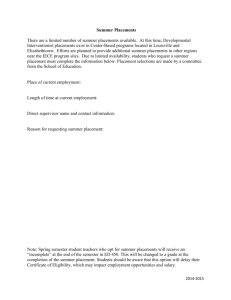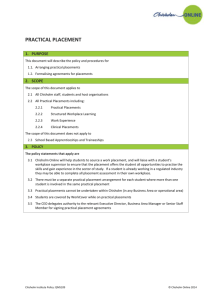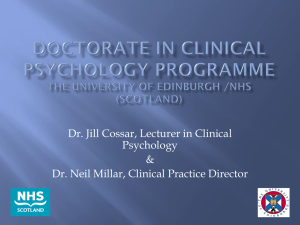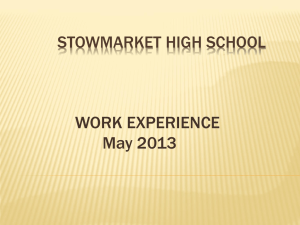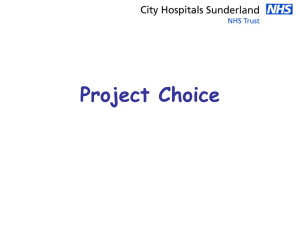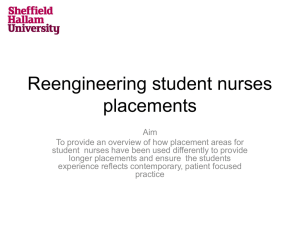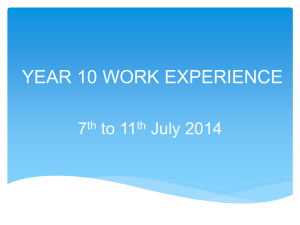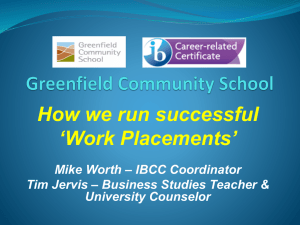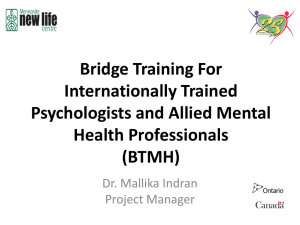here. - Action Mental Health
advertisement
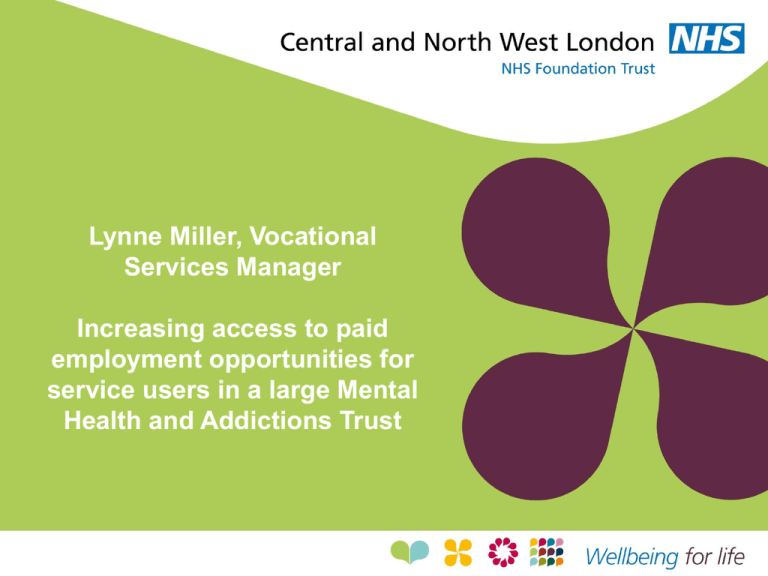
Lynne Miller, Vocational Services Manager Increasing access to paid employment opportunities for service users in a large Mental Health and Addictions Trust INTRODUCTION: • • • • • • • • Introduction to CNWL Why create a User Employment Programme Why include work placements How does it work / what are the challenges Keys to success/lessons learnt Results to date Feedback from service users Conclusions Introduction to CNWL: • One of the larges NHS Foundation Trusts in London. • 5 mental health boroughs – Westminster, Brent, Kensington and Chelsea, Harrow and Hillingdon. • 7 Addictions boroughs – Westminster, K&C, Hammersmith and Fulham, Brent, Hillingdon, Hounslow and Ealing. • Community Services in Hillingdon and Camden. • Vocational Services Manager, 4 Vocational Team leaders, 14 Employment Specialists. Why create a User Employment Programme: • Employment opportunities for service users – an important priority for CNWL. • UEP one component of our employment strategy. • NHS is a large employer and offers a range of opportunities • Set an example • Feedback from service users – a confidence boost Policy Framework – UK: • No Health Without Mental Health – Cross government mental health strategy 2011 – access to employment results in better health outcomes. • New Horizons Report (DH September 2009) • Realising Ambitions, Better Employment Support for people with a MH Condition (DWP 2009). • Social Exclusion Report 2004, Social Exclusion Unit, Office of the Deputy Primeminister. CNWL User Employment Programme: • Encourages service users to apply for existing posts in CNWL. • Supported employment model. • Offers time limited work experience placements in the Trust for up to 4 months (with active job search). • Offers post placement support. • Between Mar 2004 and Sept 2004 197 people accessed the programme, 172 people accessed placements, 81 paid outcomes, and 35 education, 17 volunteering outcomes. Why are placements important: • Can provide on the job training, references and a graded return to work. • Job taster, foot in the door, fills gaps in CV. • Added value to the organisation. • Sets good example. Establishing the programme: • • • • • Getting people on board at all levels Working with HR and Occupational Health Positive statement on job adverts/recruitment packs Employment Charter Employment Specialists in place to create support. Challenges: • Fear around what can go wrong • Finding and creating the right opportunities – real work • Creating the right support • Ensuring that any issues are addressed promptly • Ensuring that people don’t get ‘stuck’ in placements • Managing demand Keys to success: • Start small and demonstrate success • Partnership with HR and Occupational Health • Proactive management of placements with SMART objective – placement needs to reflect the clear career goal. • Active job search and internal networking/job development Feedback from service users who have done placements: “The placement made me feel more confident, I was down and negative” “I was out of work for 10 years, and needed to re-train, the service really helped me do that and believe in myself again.” “Felt like a real job not just a placement” “The placement has been a huge success and has had a positive impact on my mental health, job prospects and quality of life.” Lessons learnt: • Essential to have a Co-ordinator to drive the programme. • Monitoring of the over-all number of staff with mental health problems who gain employment in the organisation. • Mechanisms in place to support Career development. • Extending the programme to other organisations • Build in service user feedback • Extending to partner organisations
